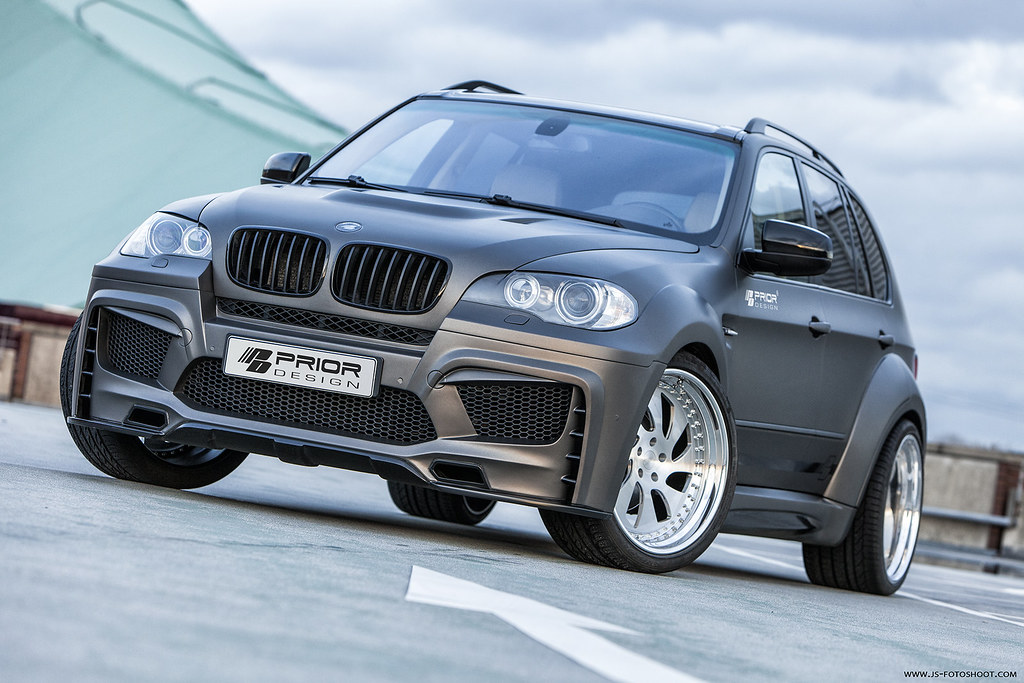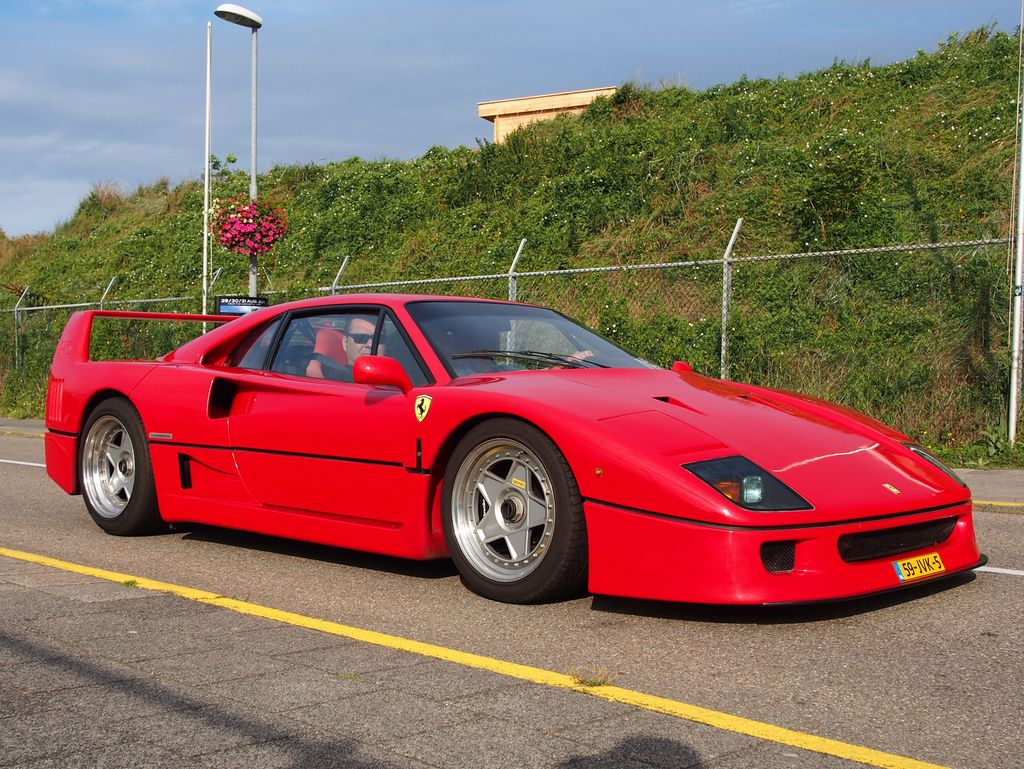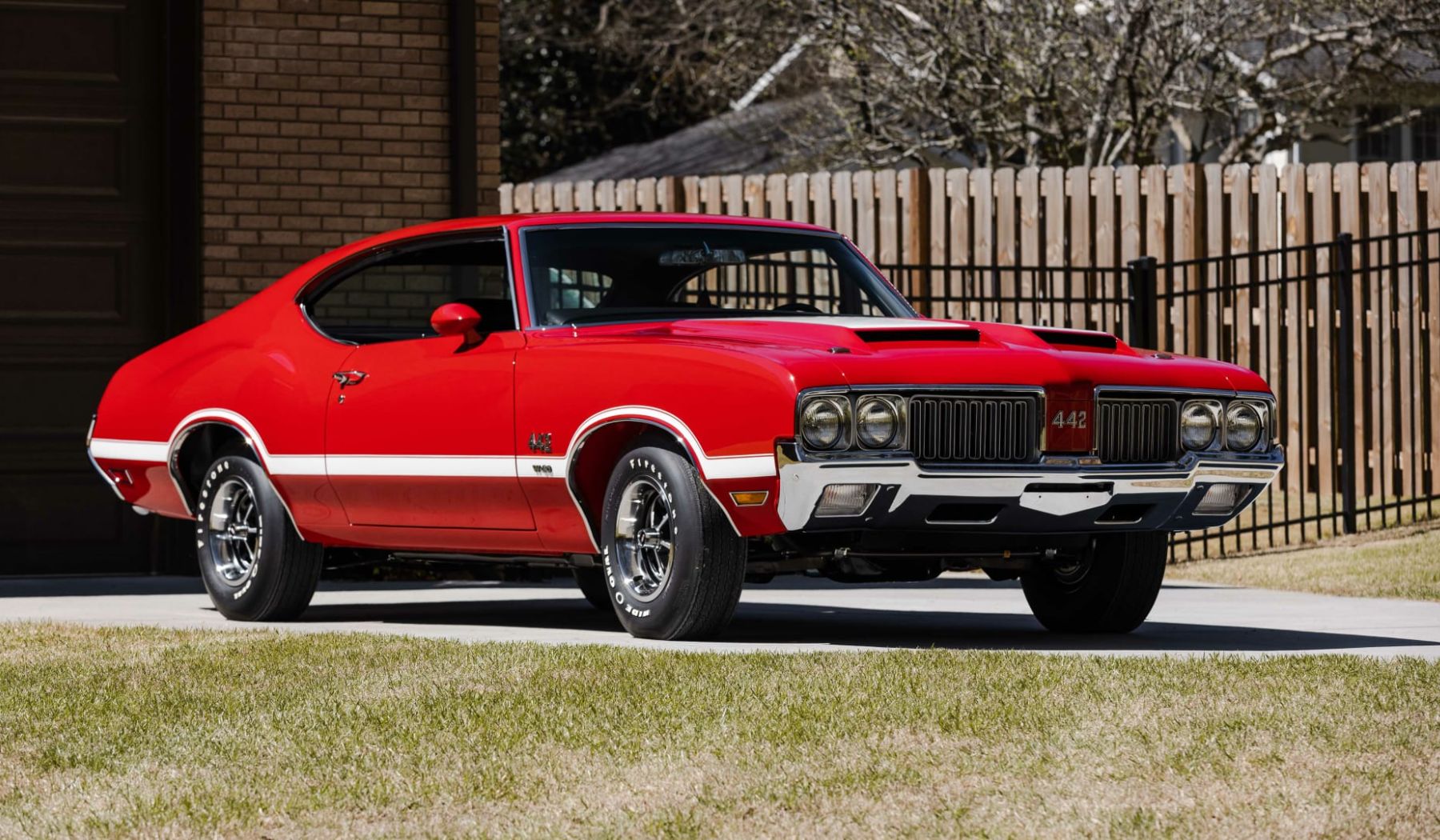
The 1970s stand as a truly vibrant and unforgettable decade for car enthusiasts, a period where American automakers pushed the limits of power, design, and sheer attitude. It was a time when muscle cars weren’t just modes of transportation; they were bold statements, roaring through the streets with an undeniable presence. Even today, these machines are hard to ignore, their throaty exhaust notes and sleek, aggressive lines capturing the imagination of generations of automotive aficionados.
Despite facing burgeoning challenges from tightening environmental and safety standards, this era continued the powerful legacy established in the late 1960s. Manufacturers, though sometimes constrained, still rolled out an impressive roster of legends. These cars maintained the spirit of freedom and rebellion, embodying an engineering ethos focused on exhilarating performance that would leave an indelible mark on automotive history.
We embark on a journey to explore some of the most influential and coveted muscle cars from this remarkable decade. Each model tells a fascinating story, reflecting not just the prevailing trends of the time but also the passion and ingenuity that fueled their creation. Get ready to delve into the detailed analysis of these automotive titans, understanding what made them so special and why they remain so influential today.
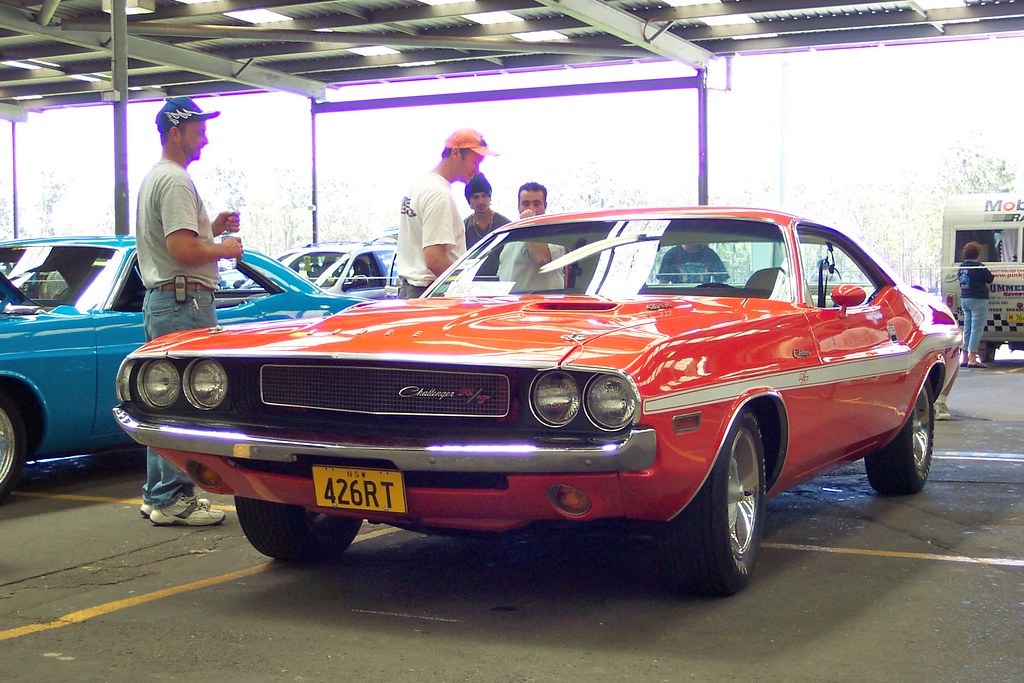
1. **1970 Dodge Challenger R/T**The 1970 Dodge Challenger R/T made its unequivocal mark as a serious muscle car contender from the very outset of the decade. With its aggressive styling and a formidable array of engine options, it was a vehicle that visually promised speed and delivered on that promise with raw power. The Challenger’s design language spoke volumes, instantly signaling its performance pedigree on the asphalt.
Its wide body, bold front grille, and the distinctive loud V8 roar make it an impossible car to miss even today. This combination of menacing aesthetics and a visceral auditory experience ensures its continued presence in the minds of enthusiasts. It’s a classic machine that has been immortalized in various cultural touchstones, including movies, cementing its status as a dream car for countless muscle car enthusiasts.
While the Challenger offered multiple engine choices, the R/T variant was unequivocally focused on delivering unadulterated performance. Enthusiasts often gravitated towards the potent 440 Six Pack engine, a powerhouse delivering around 390 horsepower. This engine, combined with the Challenger’s iconic stance and deep-rooted muscle car heritage, made it a formidable package, hard to beat for those seeking a potent blend of style and outright performance.
Car Model Information: 2010 Dodge Challenger R/T
Name: Dodge Challenger
Production: 1969–1974,1977–1983,2008–2023
ModelYears: 1970–1974,1978–1983,2008–2023
Caption: 2015 Dodge Challenger SRT Hellcat
Manufacturer: Dodge
Categories: 1970s cars, 1980s cars, 2000s cars, 2010s cars, 2020s cars
Summary: The Dodge Challenger is the name of three generations of automobiles produced by the American automobile manufacturer Dodge. However, the first use of the Challenger name by Dodge dates back to 1959 for marketing a “value version” of the full-sized Coronet Silver Challenger.
From model years 1970 to 1974, the first-generation Dodge Challenger pony car was built using the Chrysler E platform in hardtop and convertible body styles sharing significant components with the Plymouth Barracuda.
The second generation, from model years 1978 to 1983, was a rebadged Mitsubishi Galant Lambda / Sapporo, a coupe version of an economical compact car.
The third and current generation is a full-size muscle car that was introduced in early 2008 initially as a rival to the evolved fifth generation Ford Mustang and the fifth generation Chevrolet Camaro.
In November 2021, Stellantis announced that the 2023 model year would be the final model year for both the LD Dodge Charger and LA Dodge Challenger, as the company will focus its plans on electric vehicles rather than fossil fuel-powered vehicles, due to tougher emissions standards required by the Environmental Protection Agency for the 2023 model year. Challenger production ended on December 22, 2023, and the Brampton, Ontario, assembly plant will be re-tooled to assemble an electrified successor.
Get more information about: Dodge Challenger
Buying a high-performing used car >>>
Brand: Dodge Model: Challenger
Price: $15,850 Mileage: 83,491 mi.
Read more about: Roaring Engines and Timeless Tales: Our Favorite Muscle Car Memories That Will Burn Out In Your Brain!

2. **1970 Plymouth Hemi ‘Cuda**The 1970 Plymouth Hemi ‘Cuda stands as an undisputed legend among muscle car enthusiasts, representing the pinnacle of the Barracuda lineup’s evolution. At its heart was the monstrous 426 cubic inch Hemi engine, boasting an astonishing 425 horsepower. This powerplant made the Hemi ‘Cuda not just a fast car, but one of the absolute fastest vehicles of its era, a true beast unleashed on the streets.
Beyond its sheer power, the Hemi ‘Cuda was known for its striking design and availability in high-impact colors. Shades like Plum Crazy and Lime Light were more than just paint; they were statements, ensuring the car turned heads wherever it went. The bold aesthetics were perfectly complemented by its muscular stance and, in some cases, a distinctive shaker hood, further enhancing its dominating presence.
Adding to its allure, the 1970 Plymouth Hemi ‘Cuda was produced in relatively limited numbers, with only around 14,000 units rolling off the assembly line. This rarity significantly contributes to its desirability among collectors today. Its performance figures, including an impressive 0-60 mph time of approximately 5.6 seconds, solidified its reputation as a symbol of American muscle car culture that has truly stood the test of time, commanding significant value in the collector’s market.
Car Model Information: 2021 Volkswagen Tiguan 2.0T SE R-Line Black
Caption: 1970 Hardtop Coupe
Name: Plymouth Barracuda
Manufacturer: Plymouth (automobile)
Production: 1964–1974
Assembly: Fenton, Missouri,Hamtramck, Michigan,Maywood, California,Windsor, Ontario
Layout: Front-engine, rear-wheel drive layout
Class: Pony car
Categories: 1970s cars, All articles with dead external links, All articles with unsourced statements, Articles with dead external links from February 2018, Articles with dead external links from January 2022
Summary: The Plymouth Barracuda is a two-door pony car that was manufactured by Chrysler Corporation from 1964 through 1974 model years.
The first-generation Barracuda was based on the Chrysler A-body and was offered from 1964 until 1966. A two-door hardtop (no B-pillar) fastback design, it shared a great majority of parts and bodywork with the Plymouth Valiant, except for the distinctive wraparound rear glass.
The second-generation Barracuda, though still Valiant-based, was heavily redesigned. Built from 1967 through 1969, it was available as a two-door in fastback, notchback, and convertible versions.
The third generation, offered from 1970 until 1974, was based on the Chrysler E-body, exclusive to it, and the slightly larger Dodge Challenger. A completely new design, the two-door Barracuda was available in hardtop and convertible body styles.
Get more information about: Plymouth Barracuda
Buying a high-performing used car >>>
Brand: Plymouth Model: Hemi ‘Cuda
Price: $16,773 Mileage: 68,625 mi.
Read more about: Detroit’s Golden Age: 12 Classic American Cars That Ruled the Roads and Made a Nation Proud
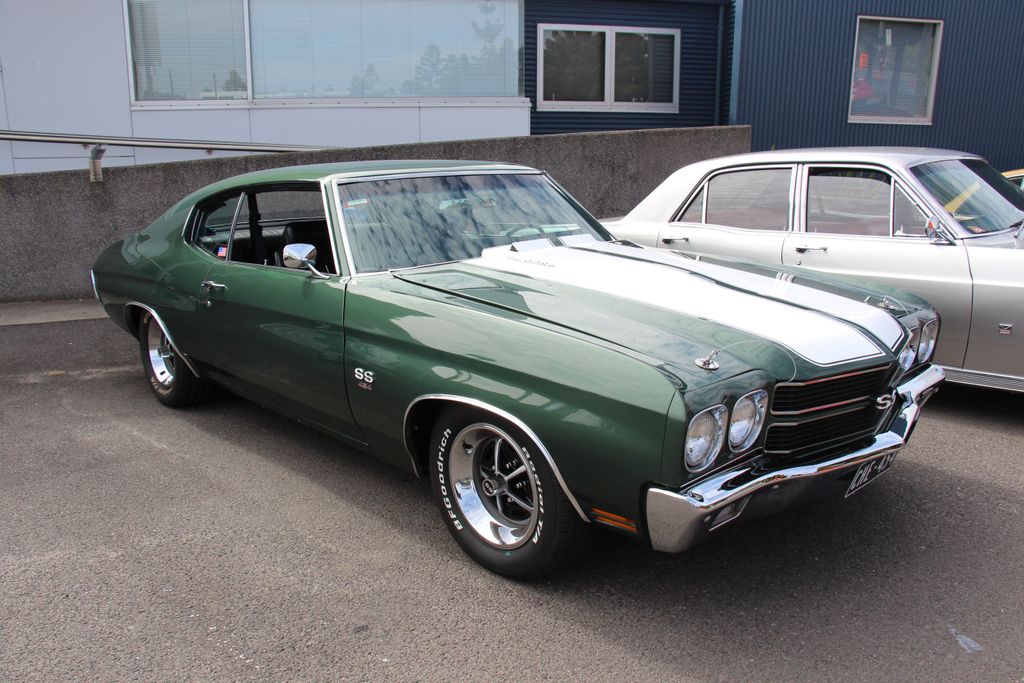
3. **1970 Chevrolet Chevelle SS 454**The 1970 Chevrolet Chevelle SS 454 is a true classic and an absolute benchmark in the muscle car world, widely considered one of the most powerful cars of its time. Underneath its menacing hood lay the formidable 454 cubic-inch V8 engine, specifically the legendary LS6, which churned out an astonishing 450 horsepower and 500 lb-ft of torque. You could truly feel that immense power when you unleashed it on the open road.
The Chevelle’s design was a masterclass in blending sleek lines with an aggressive attitude. Its bold stripes, wide body, and distinctive front grille made it an undeniable presence. This combination of raw power and assertive styling makes it a perennial fan favorite even today, captivating enthusiasts with its iconic silhouette and performance-oriented stance.
When a Chevelle SS 454 rolls up to a car show, it’s not just another vehicle; it’s an event. People invariably gather around to admire this brute from the ’70s, a testament to its enduring appeal and legendary status. Designed for uncompromising performance, it offered a thrilling driving experience and continues to be a central figure in conversations about the greatest muscle cars of its era, particularly with the extreme rarity of its 26 convertible versions.
Car Model Information: 2021 Volkswagen Tiguan 2.0T SE R-Line Black
Name: Chevrolet Chevelle
Caption: 1970 Chevrolet Chevelle SS 396 Sport Coupe
Manufacturer: Chevrolet
Production: 1963–1977
ModelYears: 1964–1977
Class: Mid-size
Platform: GM A platform (RWD)
Layout: FR layout
Successor: Chevrolet Malibu
Categories: 1970s cars, All articles needing additional references, All articles that may contain original research, All articles with specifically marked weasel-worded phrases, All articles with unsourced statements
Summary: The Chevrolet Chevelle is a mid-sized automobile that was produced by the Chevrolet division of General Motors (GM) in three generations for the 1964 to 1977 model years. Part of the GM A-body platform, the Chevelle was one of Chevrolet’s most successful nameplates. Body styles included coupes, sedans, convertibles, and station wagons. The “Super Sport” versions were produced through the 1973 model year and Lagunas from 1973 through to 1976.
After a four-year absence, the El Camino was reintroduced as part of the new Chevelle lineup in 1964.
From 1964 to 1969, GM of Canada sold a modified version of the Chevelle that included a Pontiac-style grille, and a LeMans instrument panel, marketed as the Beaumont.
The Malibu was the top-of-the-line model to 1972, and completely replaced the Chevelle nameplate starting with the redesigned, and downsized 1978 model year.
Get more information about: Chevrolet Chevelle
Buying a high-performing used car >>>
Brand: Chevrolet Model: Chevelle SS 454
Price: $16,773 Mileage: 68,625 mi.
Read more about: Detroit’s Golden Age: 12 Classic American Cars That Ruled the Roads and Made a Nation Proud
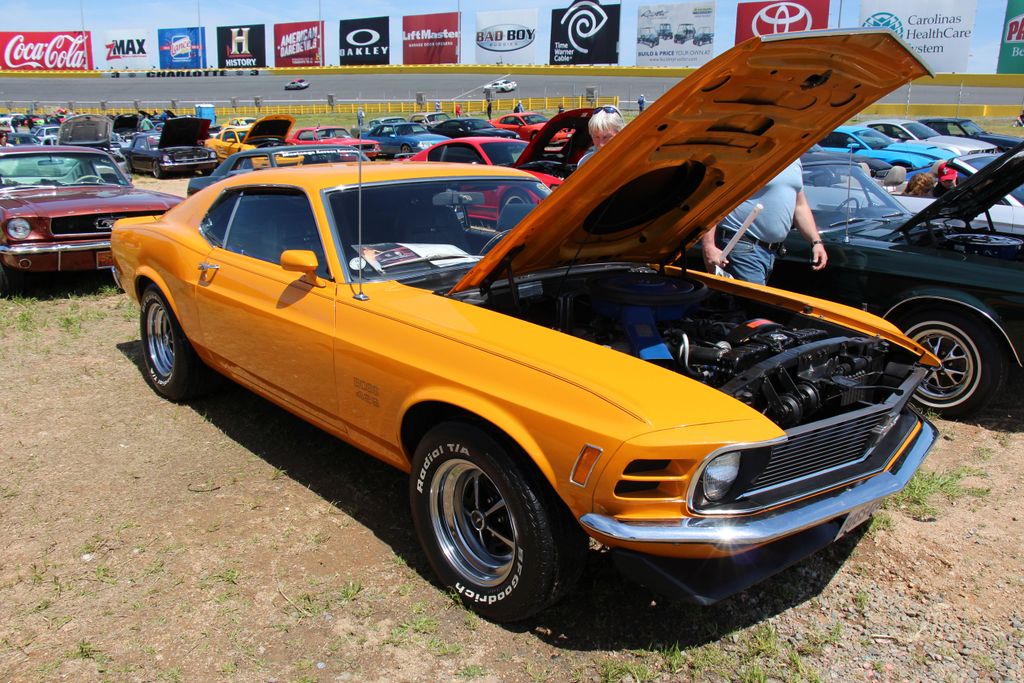
4. **1970 Ford Mustang Boss 429**The 1970 Ford Mustang Boss 429 is not just a muscle car; it’s a true icon, a vehicle fundamentally built for racing dominance. Specifically, it was created with NASCAR homologation in mind, requiring a certain number of street versions to be produced. This engineering focus meant its massive 7.0-liter V8 engine delivered an impressive 375 horsepower and tons of torque, capable of dominating the track with authority.
What truly elevates the Boss 429 to legendary status is its extreme rarity. With only about 1,300 units produced, it stands as one of the most exclusive Mustangs ever built. This limited production, coupled with its aggressive styling and race-bred engineering, makes it a highly coveted collector’s item in the automotive world.
Today, the Boss 429 is more than just a car; it’s a collector’s dream, renowned for its unique design and unparalleled performance heritage. For those deeply immersed in classic muscle, the Boss 429 is unequivocally a standout, commanding respect and admiration. Its combination of exclusivity and raw power has firmly solidified its status as one of the most legendary Mustangs ever conceived.
Car Model Information: 2021 Volkswagen Tiguan 2.0T SE R-Line Black
Caption: 1969 Boss 429
Layout: Longitudinal engine
Manufacturer: Ford Motor Company
Production: 1969–1970
Name: Mustang Boss 429
Class: Muscle car
BodyStyle: coupé
Assembly: Dearborn, Michigan
Height: 50.4 in
Abbr: on
Length: 187.4 in
Width: 71.7 in
Engine: 429 cuin
Transmission: manual transmission
Weight: 3870 lb
Categories: All Wikipedia articles needing clarification, All articles needing additional references, All articles with unsourced statements, Articles needing additional references from August 2008, Articles with short description
Summary: The Boss 429 Mustang is a high-performance Ford Mustang variant that was offered by Ford in 1969 and 1970. It featured a race-designed 429 cu in (7.0 L) semi-hemispherical head version of the big block 429 V8, offered in the car both to homologate the engine for NASCAR racing and to offer a bigger, more-powerful version of the popular small block 5 L Boss 302 Mustang.
The price of all the performance and modifications was steep: at nearly $5,000 a Boss 429 was roughly twice the price of the base model inline-6 Mustang. A total of 1,359 Boss 429s were produced.
Get more information about: Boss 429 Mustang
Buying a high-performing used car >>>
Brand: Ford Model: Mustang Boss 429
Price: $16,773 Mileage: 68,625 mi.
Read more about: Roaring Engines and Timeless Tales: Our Favorite Muscle Car Memories That Will Burn Out In Your Brain!
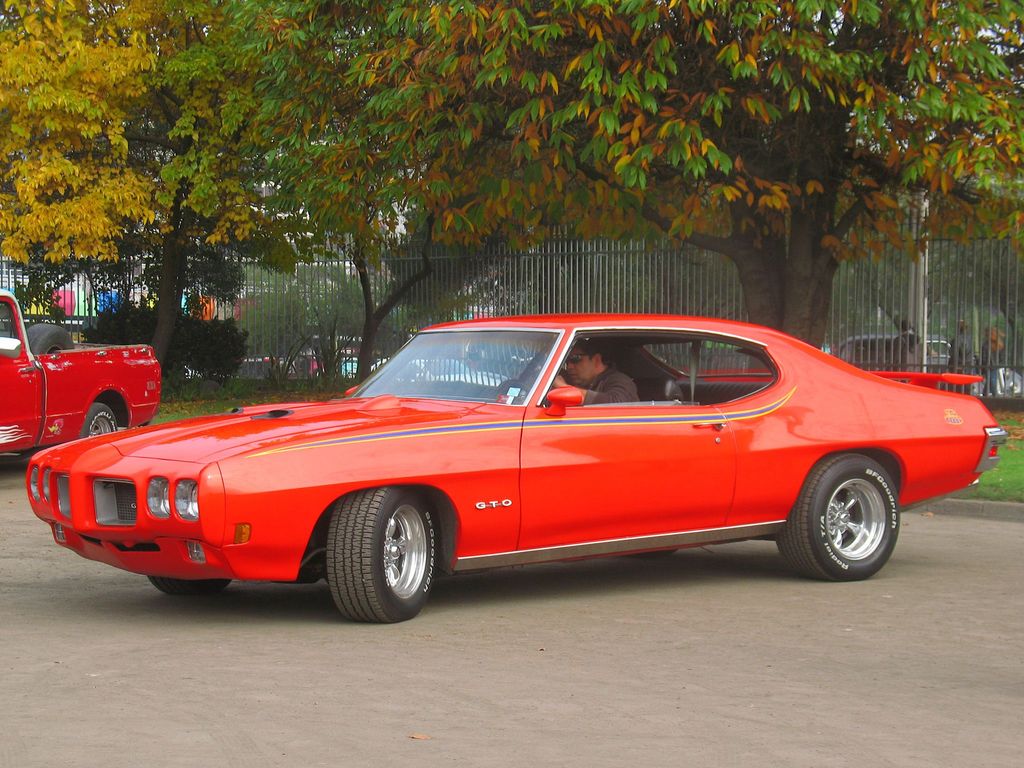
5. **1970 Pontiac GTO Judge**The 1970 Pontiac GTO Judge was far more than a mere automobile; it was a resounding statement, a declaration of intent on four wheels. With its wild colors, bold graphics, and often an iconic rear spoiler, the Judge was designed not just to stand out, but to proudly flaunt its presence and personality. It was a vehicle that embraced flamboyance and aggressive styling without reservation.
Underneath its attention-grabbing exterior, the Judge packed serious power. It was equipped with its potent Ram Air IV 400 engine, a powerplant engineered to deliver exhilarating performance. This engine ensured that the Judge could back up its audacious looks with genuine street credibility, delivering a driving experience as vibrant as its paint scheme.
Even in modern times, this car’s flashy looks and its growling engine make it an impossible sight to overlook. Whether gracing the polished lawns of a prestigious car show or rumbling down a main street, the GTO Judge will always be a showstopper. Its ultra-limited convertible version, with only 168 units produced, makes it an even rarer open-top beast, a prized possession for serious collectors.
Car Model Information: 2021 Volkswagen Tiguan 2.0T SE R-Line Black
Name: Pontiac GTO
Caption: 2005 Pontiac GTO
Manufacturer: Pontiac (automobile),Holden
Class: Mid-size car,Compact car,Mid-size car
Production: 1963–1974,2003–2006
Predecessor: Pontiac Tempest
Layout: Front-engine, rear-wheel-drive layout
ModelYears: 1964-1974 2004-2006
Categories: 1970s cars, 2000s cars, All articles with unsourced statements, Articles with short description, Articles with unsourced statements from October 2008
Summary: The Pontiac GTO is a front-engine, rear-drive, two-door, and four-passenger automobile manufactured and marketed by the Pontiac division of General Motors over four generations from 1963 until 1974 in the United States — with a fifth generation made by GM’s Australian subsidiary, Holden, for the 2004 through 2006 model years.
The first generation of the GTO is credited with popularizing the muscle car market segment in the 1960s. Some consider the Pontiac GTO to have started the trend with all four domestic automakers offering a variety of competing models.
For the 1964 and 1965 model years, the GTO was an optional package on the intermediate-sized Pontiac LeMans. The 1964 GTO vehicle identification number (VIN) started with 22, while the 1965 GTO VIN began with 237. The GTO was designated as a separate Pontiac model from 1966 through 1971 (VIN 242…). It became an optional package again for the 1972 and 1973 intermediate LeMans. For 1974, the GTO was an optional trim package on the compact-sized Ventura.
The GTO model was revived for the 2004 through 2006 model years as a captive import for Pontiac, a left-hand drive version of the Holden Monaro, itself a coupé variant of the Holden Commodore.
Get more information about: Pontiac GTO
Buying a high-performing used car >>>
Brand: Pontiac Model: GTO Judge
Price: $16,773 Mileage: 68,625 mi.
Read more about: The End of an Era: 14 Iconic Muscle Cars That Roared into Automotive History But Faded from the Mainstream
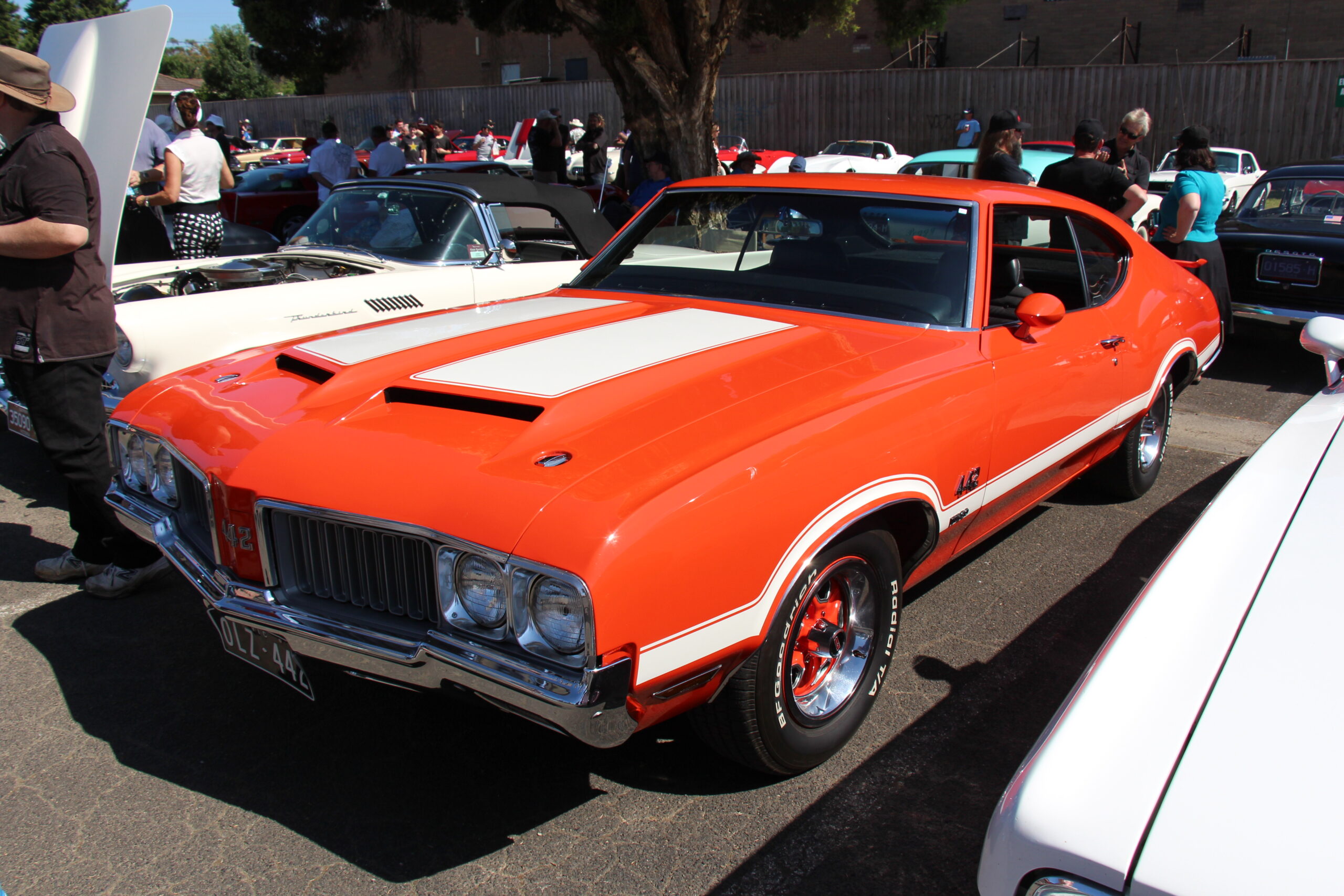
6. **1970 Oldsmobile 442**The 1970 Oldsmobile 442 is a classic that has unequivocally made its mark in the muscle car world, balancing brute force with a touch of understated sophistication. At its core, it featured a robust 455 cubic inch V8 engine, delivering an impressive 360 horsepower. This formidable powerplant ensured that the 442 was a serious contender for performance enthusiasts.
With its aggressive styling and distinctive lines, the 442 possessed a commanding presence that continues to turn heads wherever it goes. The vehicle also came equipped with a four-barrel carburetor and offered a choice of either a manual or automatic transmission, allowing drivers to tailor their experience. If you appreciated raw performance, its ability to go from 0 to 60 mph in around 6 seconds was certainly noteworthy for the era.
Collectors often seek out the rare W-30 version of the 442, which was a genuine sleeper car. With its understated looks, you might not expect it to pack 370 horsepower and an astounding 500 lb-ft of torque under the hood. This variant became a symbol of refined muscle, masterfully combining outright performance with a certain class, proving that not every powerhouse needed to scream for attention to demand it.
Car Model Information: 1969 Oldsmobile 442
Name: Oldsmobile 442
Manufacturer: Oldsmobile
ModelYears: 1964–1980,1985–1987,1990–1991
Class: Muscle car
Layout: FR layout
Caption: 1971 Oldsmobile 442
Categories: 1960s cars, 1970s cars, 1980s cars, All articles with unsourced statements, Articles with short description
Summary: The Oldsmobile 4-4-2 is a muscle car produced by Oldsmobile between the 1964 and 1987 model years. Introduced as an option package for US-sold F-85 and Cutlass models, it became a model in its own right from 1968 to 1971, spawned the Hurst/Olds in 1968, then reverted to an option through the mid-1970s. The name was revived in the 1980s on the rear-wheel drive Cutlass Supreme and early 1990s as an option package for the new front-wheel drive Cutlass Calais.
The “4-4-2” name (pronounced “Four-four-two”) derives from the original car’s four-barrel carburetor, four-speed manual transmission, and dual exhausts. It was originally written “4-4-2” (with badging showing hyphens between the numerals), and remained hyphenated throughout Oldsmobile’s use of the designation. Beginning in 1965, the 4-4-2s standard transmission was a three-speed manual along with an optional two-speed automatic and four-speed manual, but were still badged as “4-4-2″s.
Because of this change, from 1965 on, according to Oldsmobile brochures and advertisements, the 4-4-2 designation referred to the 400 cubic inch engine, four-barrel carburetor, and dual exhausts. By 1968, badging was shortened to simply “442”, but Oldsmobile brochures and internal documents continued to use the “4-4-2” model designation.
Get more information about: Oldsmobile 442
Buying a high-performing used car >>>
Brand: Oldsmobile Model: 442
Price: $43,990 Mileage: 24,000 mi.
Read more about: Unleashing Raw Power: 14 Legendary 1970s Muscle Cars Every Enthusiast Needs to Know

7. **1971 Dodge Charger R/T**The 1971 Dodge Charger R/T emerged as a muscular and inherently stylish car that refused to compromise on performance, even as the decade progressed. Its bold, “Coke-bottle” design, characterized by pronounced fender bulges, and innovative hidden headlights gave it an aggressive and distinctly modern aesthetic. This styling choice made it stand out from the crowd, projecting an image of both power and contemporary flair.
Underneath its strikingly sculpted hood, the Charger R/T was engineered to back up its formidable looks with an equally formidable powertrain. Enthusiasts could opt for the potent 440 Six Pack or, for ultimate bragging rights, the legendary 426 HEMI engines. These powerplants ensured that the Charger R/T was not just a visual spectacle but a genuine force on the road, delivering exhilarating performance.
Even today, the Charger R/T is celebrated for its exceptional blend of style and sheer speed, a testament to its enduring design and engineering prowess. Whether observed cruising effortlessly down the highway or revving its engine at a competitive car meet, this iconic machine consistently demands attention, remaining a true highlight for automotive enthusiasts and collectors alike.
The 1970s was a period of incredible innovation and audacious design in the American automotive landscape, and while we’ve already celebrated some of the era’s titans, the story of muscle cars from this decade is far from complete. As enthusiasts, we know that every twist and turn brought forth new legends, each with a unique contribution to the rich tapestry of automotive history. These machines continued to embody power, style, and a certain rebellious spirit that resonates deeply with collectors and gearheads to this day.
Now, we shift gears to explore seven more unforgettable muscle machines that helped define the decade. These vehicles, too, faced the evolving challenges of the time, yet emerged as enduring symbols of American ingenuity and performance. Get ready to delve into their unique stories, appreciating their engineering nuances, distinctive aesthetics, and why they continue to command such coveted status in the world of classic cars.
Car Model Information: 2021 Volkswagen Tiguan 2.0T SE R-Line Black
Name: Dodge Charger
Caption: 1969 Dodge Charger
Manufacturer: Dodge
Production: 1966–1978,1981–1987,2005–present
ModelYears: 1966–1978,1982–1987,2006–present
Categories: 1960s cars, 1970s cars, 1980s cars, 2000s cars, 2010s cars
Summary: The Dodge Charger is a model of automobile marketed by Dodge in various forms over eight generations since 1966.
The first Charger was a show car in 1964. A 1965 Charger II concept car resembled the 1966 production version.
In the United States, the Charger nameplate has been used on mid-size cars, personal luxury coupes, subcompact hatchbacks, and full-size sedans.
Get more information about: Dodge Charger
Buying a high-performing used car >>>
Brand: Dodge Model: Charger R/T
Price: $16,773 Mileage: 68,625 mi.
Read more about: Roaring Engines and Timeless Tales: Our Favorite Muscle Car Memories That Will Burn Out In Your Brain!
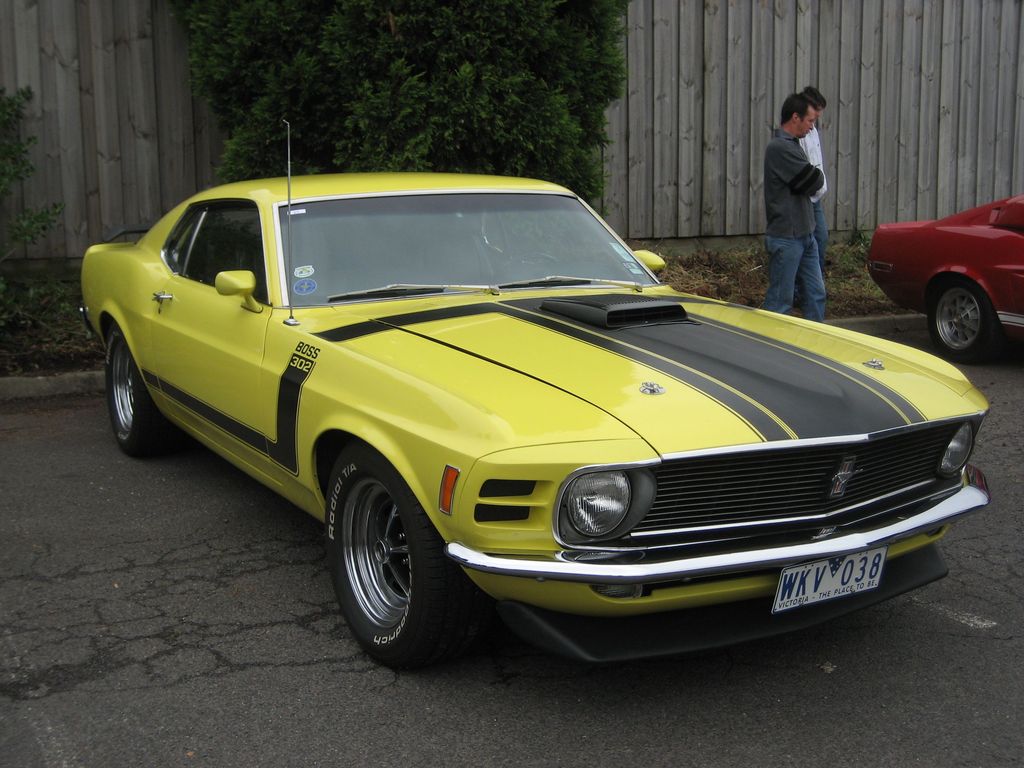
8. **1970 Ford Mustang Boss 302**While its sibling, the Boss 429, targeted NASCAR’s tracks, the 1970 Ford Mustang Boss 302 forged its legacy on the Trans-Am racing circuit. This was a precisely engineered machine, designed for outright performance and agile handling to dominate competitive road racing. Its high-revving 302-cubic-inch V8 engine was a masterpiece of power delivery, optimized for higher RPMs.
The Boss 302 captivated onlookers with its sleek fastback design, accentuated by bold racing stripes. This combination of aggressive aesthetics and clear performance focus made it an instant classic upon release. It wasn’t just about raw horsepower; it was a harmonious blend of power, balance, and visual dynamism that set it apart.
Today, the Boss 302 remains an undeniable head-turner, its timeless design and racing heritage deeply ingrained in enthusiasts’ minds. It’s the kind of car muscle car aficionados spot from a mile away, instantly recognizing its distinctive silhouette and historical significance. Few cars command such respect, echoing its original intent as a formidable racer.
Car Model Information: 2021 Volkswagen Tiguan 2.0T SE R-Line Black
Layout: FR layout
Manufacturer: Ford Motor Company
Production: 1969–1970 and 2012–2013
Name: Boss 302 Mustang
Assembly: Dearborn, Michigan
Designer: Larry Shinoda
Engine: Ford Boss 302 engine,Overhead valve,V8 engine
Transmission: Manual transmission
Related: Ford Mustang
Class: Muscle car
BodyStyle: Fastback,Coupe
Categories: All articles needing additional references, All articles with unsourced statements, Articles needing additional references from June 2023, Articles with short description, Articles with unsourced statements from March 2024
Summary: The Mustang Boss 302 is a high-performance 302 cu in (4.9 L) H.O. V8-powered variant of the Ford Mustang originally produced by Ford in 1969 and 1970. Developed to meet homologation requirements to compete in Trans Am racing, it was Ford’s response to the success of the Chevrolet Camaro Z/28 in the 5 L (305.1 cu in) and under SCCA series since 1967. While substantial modifications were required to the stock Boss 302 to be competitive on the track, many thousands were sold to the public in a street-legal form that included a refined high-performance motor and upgrades to the suspension and brakes over base Mustangs.
Ford revived the Boss 302 name for another two year production run in 2012 and 2013.
Get more information about: Boss 302 Mustang
Buying a high-performing used car >>>
Brand: Ford Model: Mustang Boss 302
Price: $16,773 Mileage: 68,625 mi.
Read more about: Roaring Engines and Timeless Tales: Our Favorite Muscle Car Memories That Will Burn Out In Your Brain!
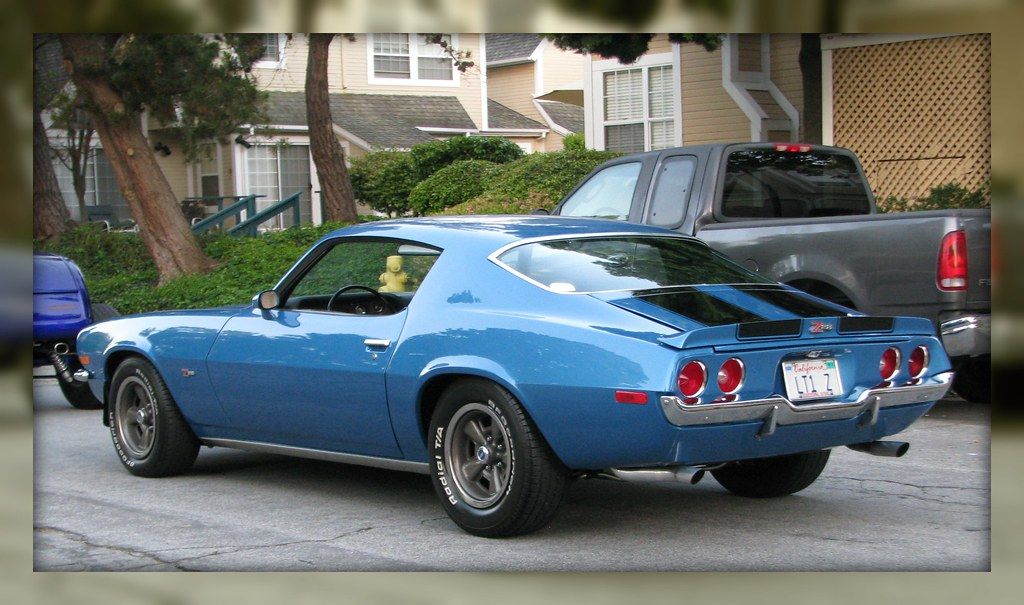
9. **1970 Chevrolet Camaro Z28**The 1970 Chevrolet Camaro Z28 burst onto the scene as one of the most iconic muscle cars ever, instantly symbolizing speed and sophisticated style. With its aggressive front end, sharply sculpted lines, and a high-revving 350 engine, the Z28 was meticulously crafted for an exhilarating driving experience. It was a clear statement of performance intent.
This iteration of the Camaro was a darling among street racers and weekend warriors, admired for its potent blend of acceleration and impressive handling. The Z28 package, introduced in 1970, featured a 350 cubic inch V8 producing a robust 360 horsepower, ideal for those demanding uncompromising performance.
Even today, this Camaro remains a perennial favorite, its sharp design and timeless appeal ensuring its prominence in the classic car scene. Whether parked at a prestigious show or roaring down the highway, the 1970 Chevrolet Camaro Z28 always gets noticed. It truly embodied the spirit of the era and continues to captivate enthusiasts.
Car Model Information: 2021 Volkswagen Tiguan 2.0T SE R-Line Black
Name: Chevrolet Camaro
Manufacturer: Chevrolet
Production: 1966–2002,2009–2023
ModelYears: 1967–2002,2010–2024
Class: Pony car
BodyStyle: coupe,convertible
Platform: GM F platform,GM Zeta platform,GM Alpha platform
Layout: Front-engine, rear-wheel-drive layout
Categories: 1970s cars, 1980s cars, 1990s cars, 2+2 coupés, 2000s cars
Summary: The Chevrolet Camaro is a mid-size American automobile manufactured by Chevrolet, classified as a pony car. It first went on sale on September 29, 1966, for the 1967 model year and was designed to compete with the Ford Mustang. The Camaro shared its platform and major components with the Firebird, produced by General Motors’ Pontiac division that was also introduced for the 1967 model year.
Four distinct generations of the Camaro were developed before production ended in 2002. The nameplate was revived on a concept car that evolved into the fifth-generation Camaro; production started on March 16, 2009.
Production of the sixth generation of the Camaro ended in December 2023, for the 2024 model year.
Get more information about: Chevrolet Camaro
Buying a high-performing used car >>>
Brand: Chevrolet Model: Camaro Z28
Price: $16,773 Mileage: 68,625 mi.
Read more about: Roaring Engines and Timeless Tales: Our Favorite Muscle Car Memories That Will Burn Out In Your Brain!

10. **1970 AMC Javelin AMX**Often celebrated as one of its decade’s most underrated muscle cars, the 1970 AMC Javelin AMX stood out with strikingly aggressive styling and impressive performance. In an era dominated by the Big Three, AMC dared to offer something distinctive, and the Javelin AMX was their bold declaration in the muscle car wars, ensuring it never blended into the background.
Rarity is a significant part of the AMX’s allure; only 2,054 units were equipped with the specific AMX performance package, making it a genuine rare gem for collectors. This limited production adds to its mystique and desirability among those who appreciate exclusivity alongside raw power.
Underneath its captivating exterior, the Javelin AMX was a serious contender. The optional “Go-Package” transformed its 5.9-liter V8, boosting output to a thrilling 330 horsepower and an astounding 430 lb-ft of torque. This power, coupled with a performance suspension and power-assisted disc brakes, ensured a truly exhilarating and confident ride, proving AMC was a force to be reckoned with.
Car Model Information: 2021 Volkswagen Tiguan 2.0T SE R-Line Black
Name: AMC Javelin
Caption: 1971 AMC Javelin SST
Manufacturer: American Motors Corporation
Aka: unbulleted list
Production: 1967–1974
ModelYears: 1968–1974
Assembly: unbulleted list
Designer: Dick Teague
Class: unbulleted list
BodyStyle: hardtop
Layout: Front-engine, rear-wheel drive layout
Platform: AMC’s “junior” cars
Predecessor: Rambler Marlin
Categories: 1970s cars, AMC vehicles, All articles that may contain original research, All articles with dead external links, All articles with unsourced statements
Summary: The AMC Javelin is an American front-engine, rear-wheel-drive, two-door hardtop automobile manufactured by American Motors Corporation (AMC) across two generations, 1968 through 1970 and 1971 through 1974 model years. The car was positioned and marketed in the pony car market segment.
Styled by Dick Teague, the Javelin was available in a range of trim and engine levels, from economical pony car to muscle car variants. In addition to manufacture in Kenosha, Wisconsin, Javelins were assembled under license in Germany, Mexico, Philippines, Venezuela, as well as Australia – and were marketed globally. American Motors also offered discounts to U.S. military personnel, and cars were taken overseas.
The Javelin won the Trans-Am race series in 1971, 1972, and 1976. The second-generation AMX variant was the first pony car used as a standard vehicle for highway police car duties by an American law enforcement agency.
Get more information about: AMC Javelin
Buying a high-performing used car >>>
Brand: AMC Model: Javelin AMX
Price: $16,773 Mileage: 68,625 mi.
Read more about: The End of an Era: 14 Iconic Muscle Cars That Roared into Automotive History But Faded from the Mainstream
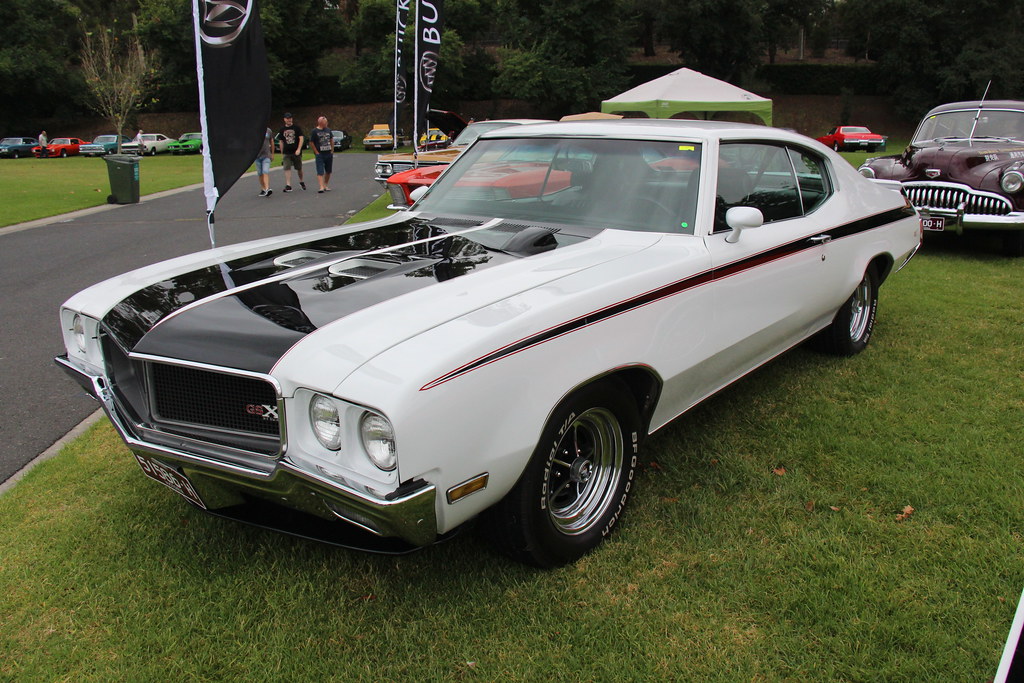
11. **1970 Buick GSX**Buick’s potent contribution to the fierce muscle car battles of the early 1970s arrived in the form of the magnificent 1970 Buick GSX. This high-performance variant was designed to make a resounding statement, and with only 678 units produced, it immediately established itself as one of the era’s rare and highly coveted gems for collectors.
Under the hood, enthusiasts could find a massive 455 cubic inch V8 engine. It was the optional Stage 1 version that truly unleashed its beastly potential, pushing out an astonishing 510 lb-ft of torque. This incredible torque figure made it one of the fastest muscle cars of its era, capable of delivering immense, immediate power to the pavement.
The GSX was not merely about brute force; its bold design was crafted to turn heads. Available in distinctive Saturn Yellow or Apollo White, complemented by bold stripes and a unique hood scoop, the GSX possessed an unmistakable visual presence. It masterfully balanced raw power with a certain degree of luxury and sophisticated styling, characteristic of Buick’s approach.
Today, the 1970 Buick GSX is a highly sought-after classic, particularly the even rarer Stage 1 version. Its unique combination of overwhelming torque, limited production, and distinctive styling ensures its legendary status. For those in the know, the GSX represents a pinnacle of muscle car engineering.
Read more about: The End of an Era: 14 Iconic Muscle Cars That Roared into Automotive History But Faded from the Mainstream
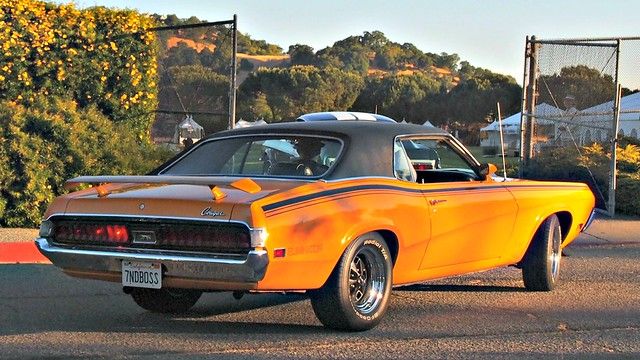
12. **1970 Mercury Cougar Eliminator**Mercury presented its compelling answer to the muscle car craze in the form of the 1970 Cougar Eliminator. This distinctively styled, performance-oriented machine was built to aggressively challenge its contemporaries. With bold stripes, an assertive rear spoiler, and powerful engine options like the Boss 302 or 428 Cobra Jet, the Eliminator was crafted to command attention.
Its aggressive looks were perfectly complemented by solid performance, establishing it as a serious contender. It delivered impressive 0-60 mph times, often around 6.6 seconds, backing up its styling with genuine street credibility. Its agile handling further differentiated it, offering a spirited driving experience.
Despite being less popular than its Mustang counterpart, the Cougar Eliminator held its own, carving a unique niche. Today, it’s often regarded as an underrated gem, a testament to Mercury’s efforts to blend performance with a distinctive, upscale flair. When you encounter one, you appreciate its singular place in muscle car history.
Car Model Information: 2021 Volkswagen Tiguan 2.0T SE R-Line Black
Name: Mercury Cougar
Caption: 1969 Mercury Cougar (first generation)
Manufacturer: Mercury (automobile)
Layout: Front-engine, rear-wheel-drive layout
ModelYears: 1967–1997,1999–2002
Class: Pony car,Personal luxury car,Mid-size car,Sport compact
Categories: 1960s cars, 1970s cars, 1980s cars, 1990s cars, 2000s cars
Summary: The Mercury Cougar is a series of automobiles that was sold by Mercury from 1967 to 2002. The model line is a diverse series of vehicles; though the Cougar nameplate is most commonly associated with two-door coupes, at various stages in its production, the model also was offered as a convertible and a hatchback. During its production as the mid-size Mercury line, the Cougar was also offered as a four-door sedan and five-door station wagon.
In production for 34 years across eight generations (skipping the 1998 model year), the Cougar is second only to the Grand Marquis (36 years) in the Mercury line for production longevity. 2,972,784 examples were produced, making it the highest-selling Mercury vehicle. During the 1970s and 1980s, the marketing of the Mercury division was closely associated with the Cougar, with promotional materials advertising Mercury dealers as “The Sign of the Cat” with big cats atop Lincoln-Mercury dealer signs. Cat-related nameplates were adopted by other Mercury lines, including the Bobcat and Lynx.
During its production, the Cougar was assembled at the Dearborn Assembly Plant (part of the Ford River Rouge Complex) in Dearborn, Michigan from 1967 until 1973, San Jose Assembly (Milpitas, California) from 1968 into early 1969, Lorain Assembly (Lorain, Ohio) from 1974 until 1997, and at Flat Rock Assembly (Flat Rock, Michigan) from 1999 through 2002.
Get more information about: Mercury Cougar
Buying a high-performing used car >>>
Brand: Mercury Model: Cougar Eliminator
Price: $16,773 Mileage: 68,625 mi.
Read more about: The End of an Era: 14 Iconic Muscle Cars That Roared into Automotive History But Faded from the Mainstream
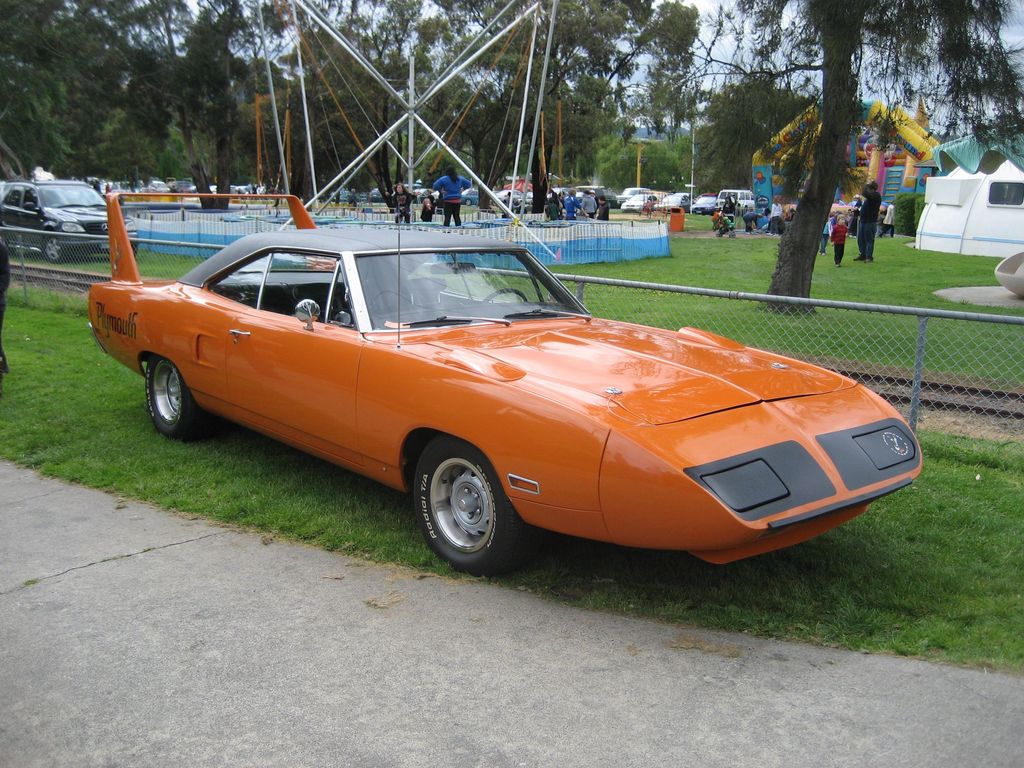
13. **1970 Plymouth Superbird**If any muscle car embodied pure NASCAR dominance, it was the 1970 Plymouth Superbird. This extraordinary vehicle was a marvel of aerodynamic engineering, explicitly designed to conquer high-speed oval tracks. Its unmistakable silhouette, featuring a massive rear wing and a pointed, aerodynamic nose cone, made it look less like a road car and more like something from a futuristic race track.
The Superbird wasn’t just about its outlandish appearance; it was built to perform. Underneath, it packed the legendary 426 Hemi V8, generating an awe-inspiring 425 horsepower and 490 lb-ft of torque. This potent powerplant, combined with its advanced aerodynamics, allowed it to achieve incredible speeds and unparalleled stability on the track, making it a true force.
Rarity is another hallmark of the Superbird’s appeal, as only 1,935 units were produced for NASCAR homologation. This limited production instantly elevated it to an exclusive collector’s item. Capable of reaching 60 mph in under six seconds, it remains one of the most desirable muscle cars ever, particularly among racing enthusiasts who appreciate its direct motorsport lineage.
Read more about: The End of an Era: 14 Iconic Muscle Cars That Roared into Automotive History But Faded from the Mainstream
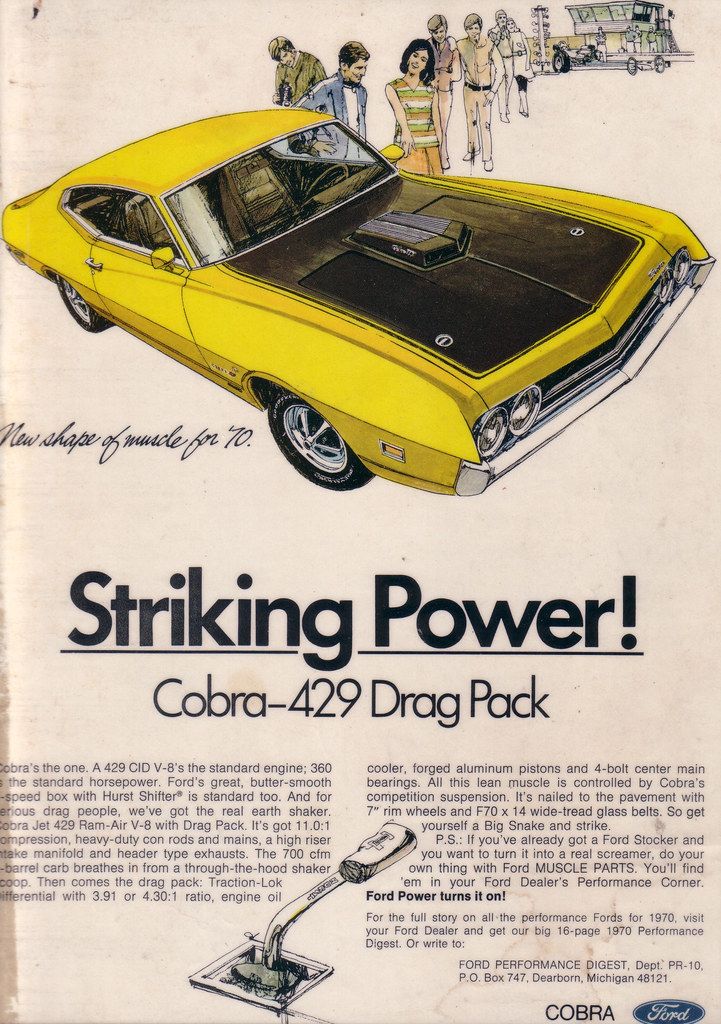
14. **1970 Ford Torino Cobra**The 1970 Ford Torino Cobra stands out as a significant player in the muscle car era, especially for enthusiasts appreciating a blend of brute strength and a strong NASCAR pedigree. This was a formidable machine, instantly recognizable by its sleek, fastback design that hinted at its high-performance aspirations. Its extensive length of 204 inches and substantial 116-inch wheelbase gave it an imposing presence.
Underneath its imposing hood, the Torino Cobra truly packed a serious punch. Enthusiasts could find a robust 429-cubic-inch V8 engine, with the available 429 Cobra Jet variant specifically designed to deliver impressive horsepower and torque. This powertrain made it a genuine force to be reckoned with, both on the streets and race tracks.
While perhaps not as flashy as some contemporaries, the Torino Cobra possessed an understated performance that often surprised rivals. Its sporty design embodied the bold ambitions of the time, seamlessly integrating performance cues into a larger, more mature platform. It offered a thrilling driving experience that satisfied both the desire for speed and a comfortable cruise.
Car Model Information: 2021 Volkswagen Tiguan 2.0T SE R-Line Black
Aka: Ford Fairlane (Venezuela)
Name: Ford Torino
Caption: 1970 Ford Torino Cobra SportsRoof
Manufacturer: Ford Motor Company
Production: 1968–1976
Class: Mid-size car,muscle car
Layout: FR layout
Related: Mercury Montego
Assembly: ubl
Predecessor: Ford Fairlane (Americas)
Successor: Ford LTD II
Categories: 1960s cars, 1970s cars, All Wikipedia articles written in American English, All articles with vague or ambiguous time, Articles with short description
Summary: The Ford Torino is an automobile that was produced by Ford for the North American market between 1968 and 1976. It was a competitor in the intermediate market segment and essentially a twin to the Mercury Montego line.
Just as the Ford LTD had been the upscale version of the Ford Galaxie, the Torino was initially an upscale variation of the intermediate-sized Ford Fairlane. In the 1968 and 1969 model years, the intermediate Ford line consisted of lower-trim Fairlanes and its subseries, the upper-trim Torino models. In 1970, Torino became the primary name for Ford’s intermediate, and the Fairlane was now a subseries of the Torino. In 1971, the Fairlane name was dropped altogether, and all Ford intermediates were called Torino.
Most Torinos were conventional cars, and generally the most popular models were the four-door sedans and two-door hardtops. However, Ford produced some high-performance “muscle car” versions of the Torino by fitting them with large powerful engines, such as the 428 cu in (7.0 L) and 429 cu in (7.0 L) “Cobra-Jet” engines. Ford also chose the Torino as the base for its NASCAR entrants, and it has a successful racing heritage.
Get more information about: Ford Torino
Buying a high-performing used car >>>
Brand: Ford Model: Torino Cobra
Price: $16,773 Mileage: 68,625 mi.
Read more about: The End of an Era: 14 Iconic Muscle Cars That Roared into Automotive History But Faded from the Mainstream
As we conclude our deep dive into these magnificent machines, it becomes abundantly clear that the muscle cars of the 1970s were more than just automobiles; they were vibrant statements of an era, roaring testaments to American engineering ingenuity and a relentless pursuit of performance. Despite facing evolving regulations and shifting market dynamics, these vehicles continued to push boundaries, leaving an indelible mark on automotive history. Each model, from the track-bred Boss 302 to the aerodynamic Superbird, tells a unique story of power, style, and an unyielding spirit. They remind us of a time when the open road beckoned with the promise of exhilarating speed and distinctive design. Today, these legends endure, not just as prized collector’s items, but as cherished symbols of an iconic period, ensuring their legacy will continue to ignite passion for generations to come.


